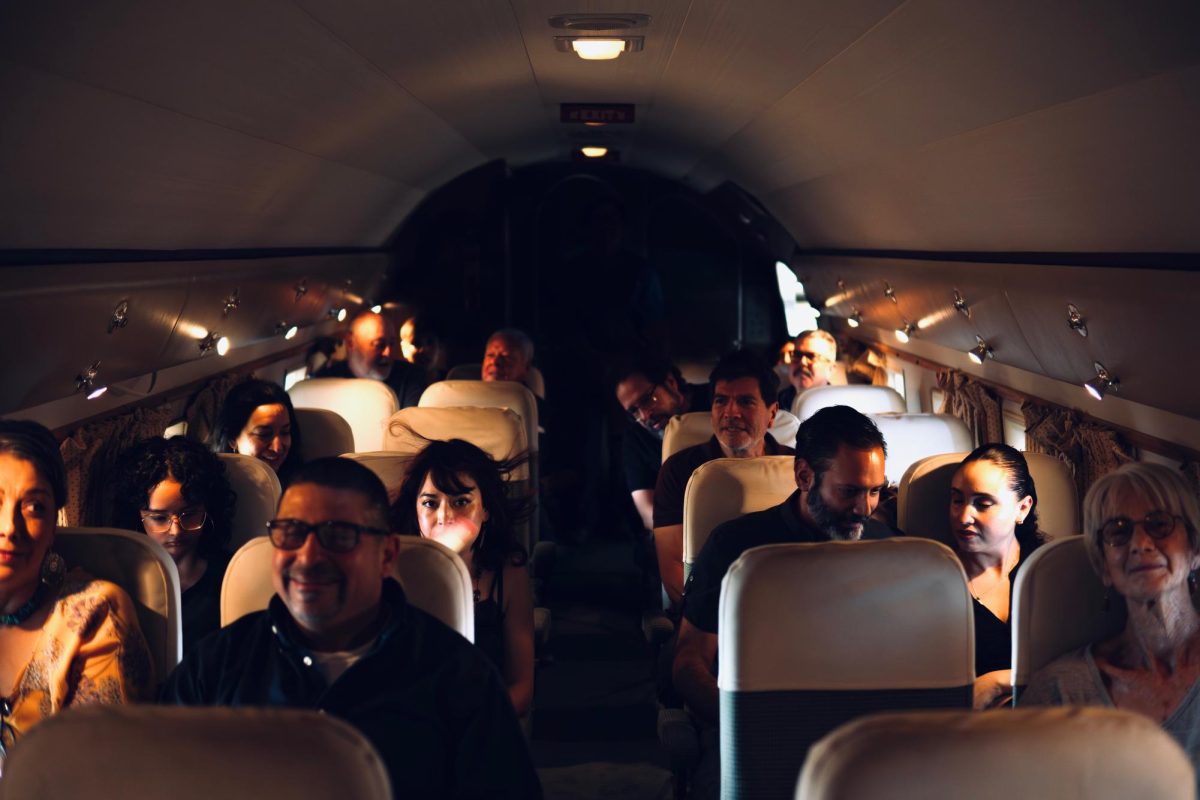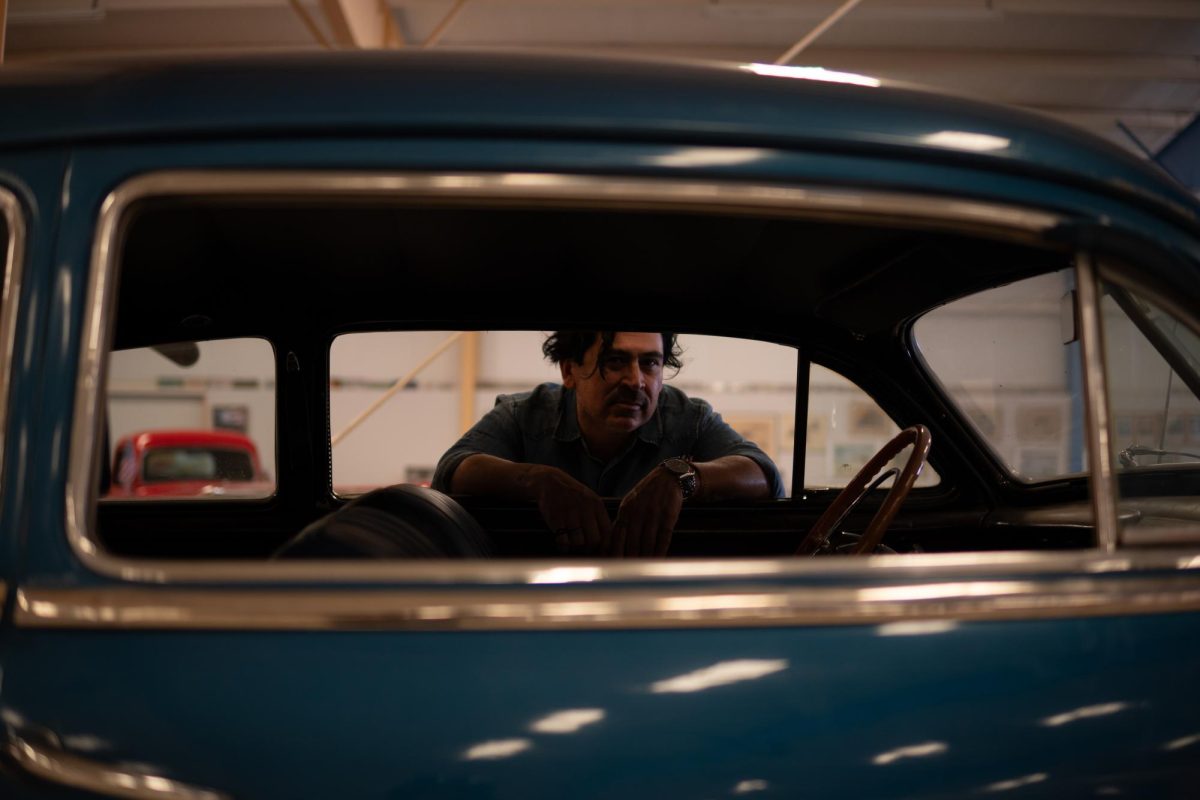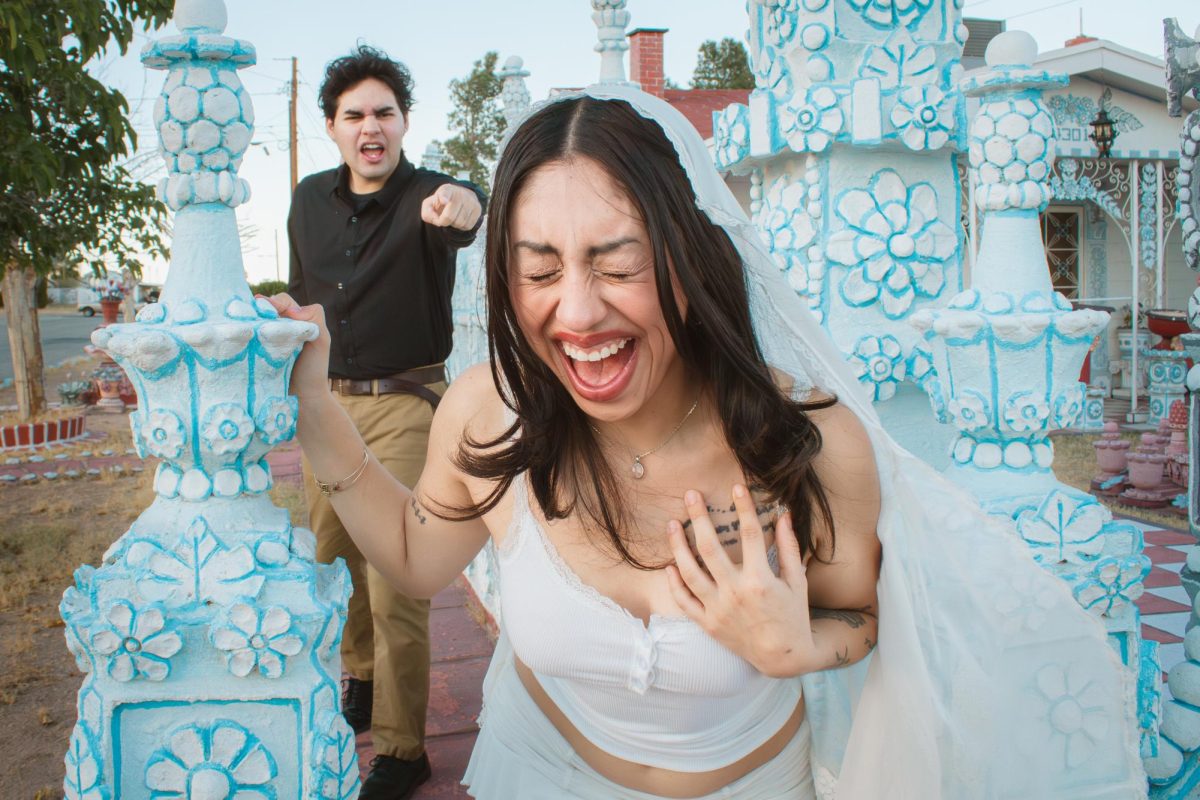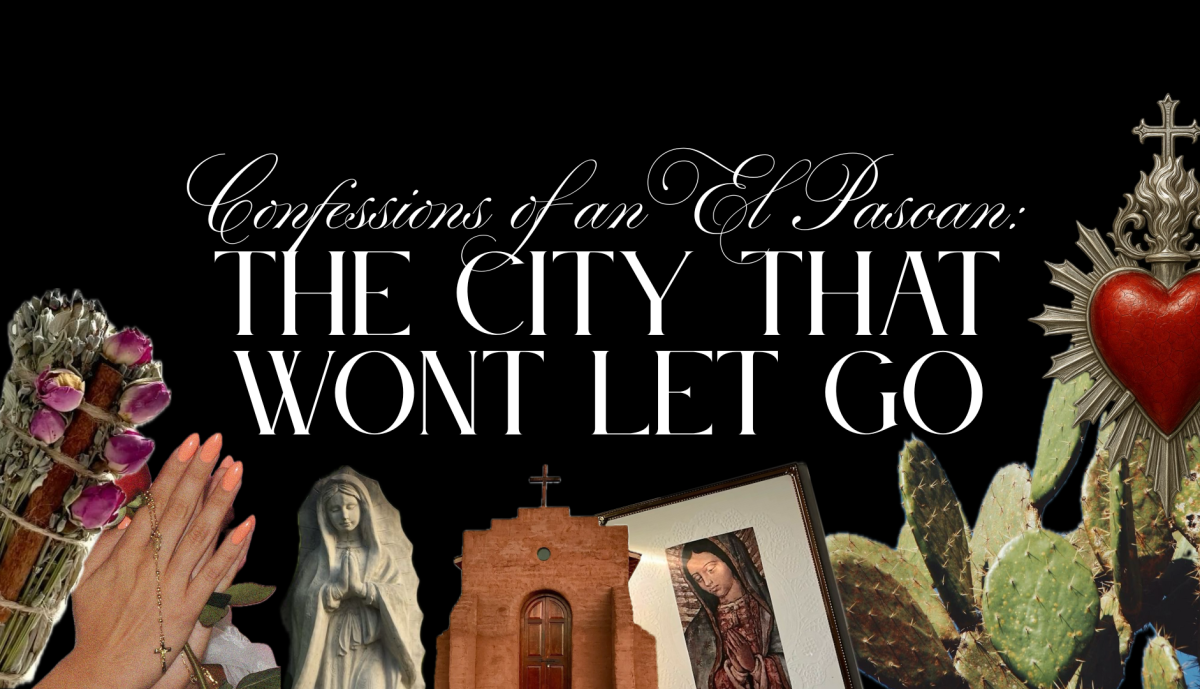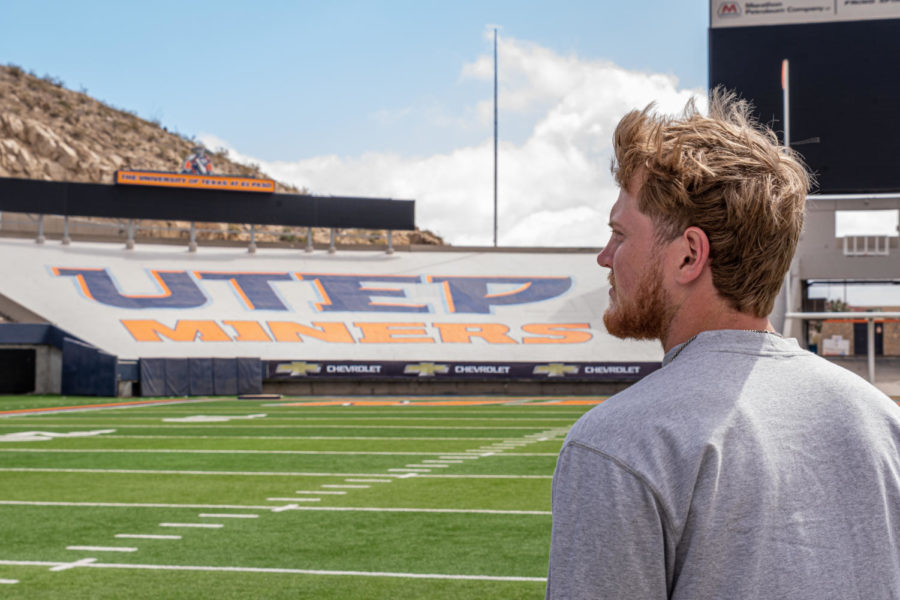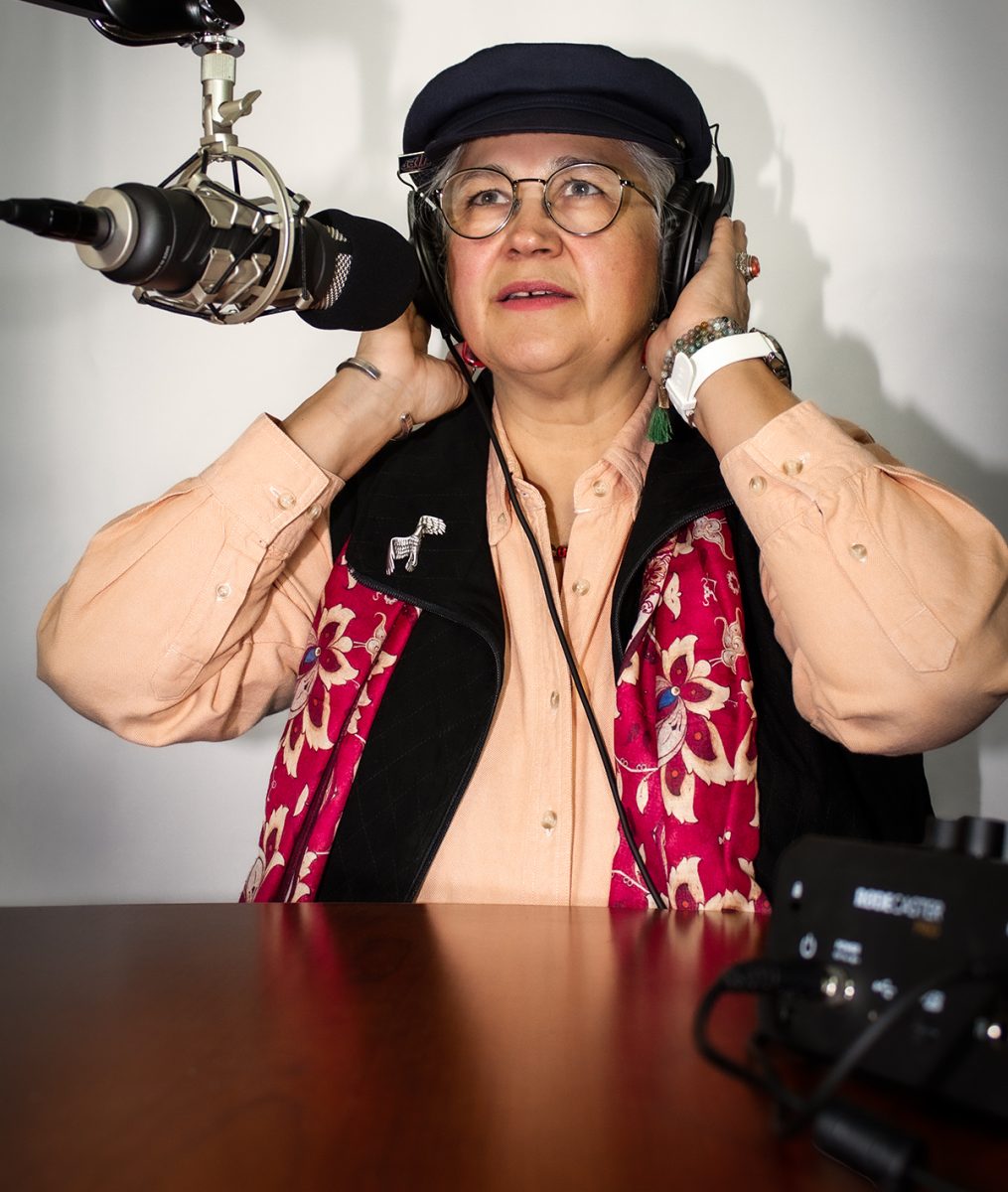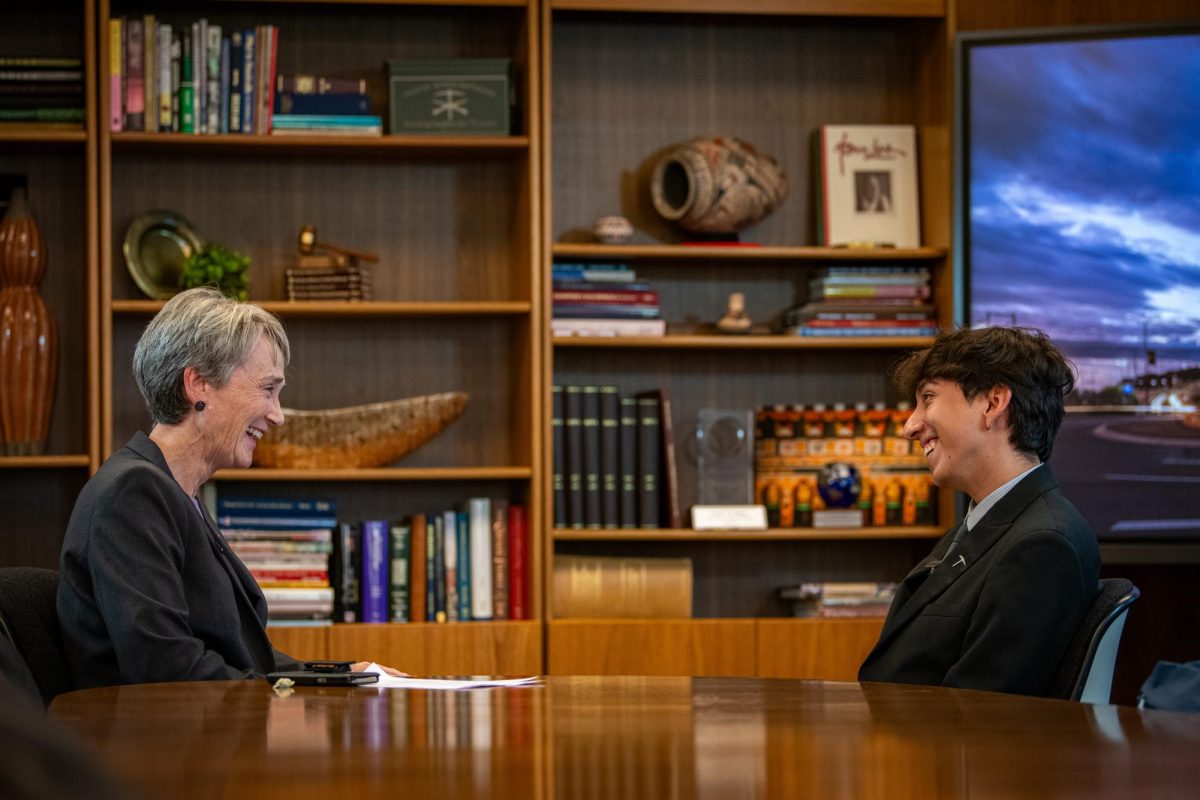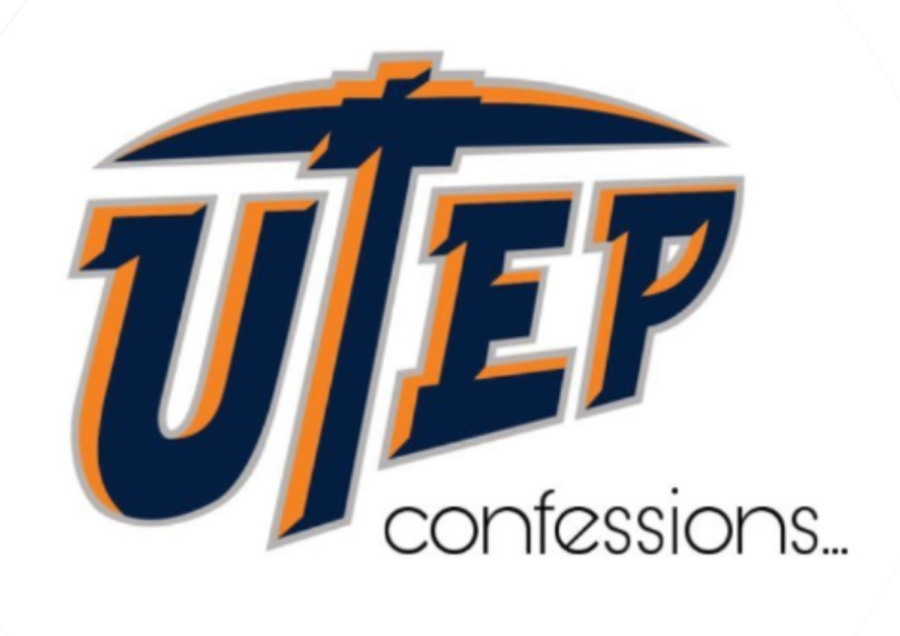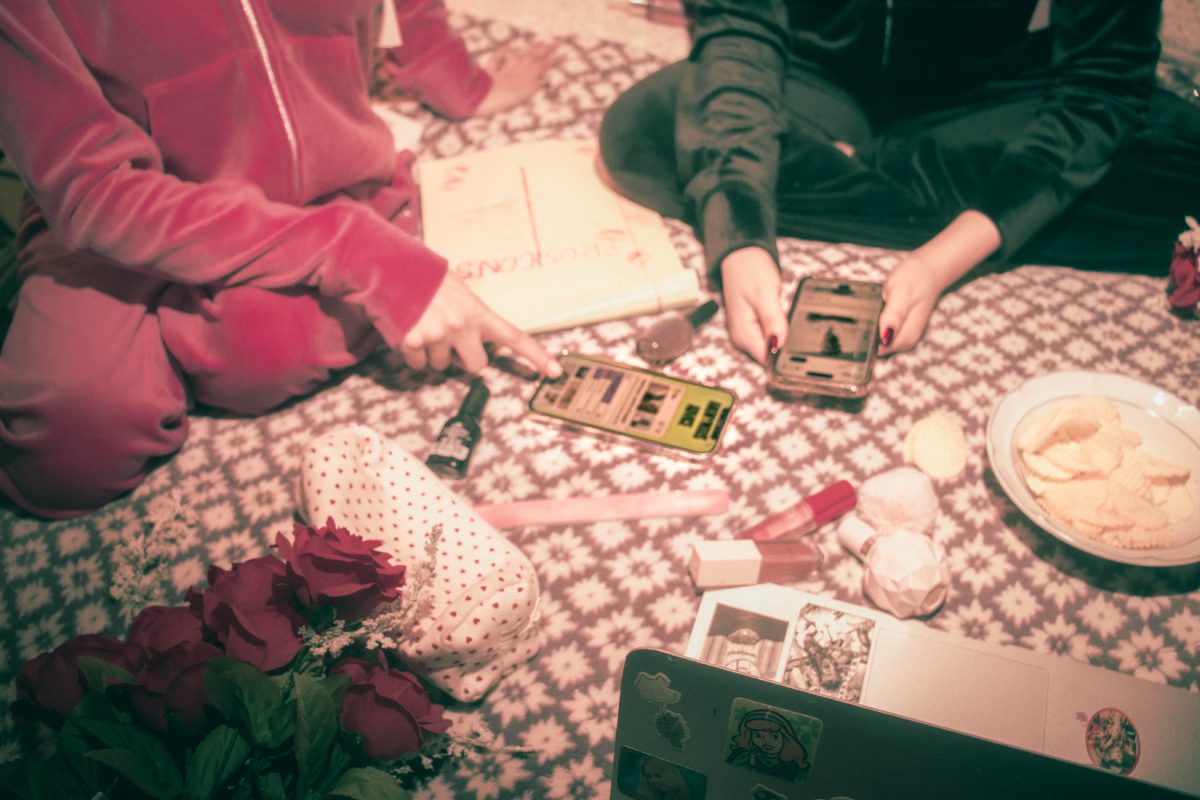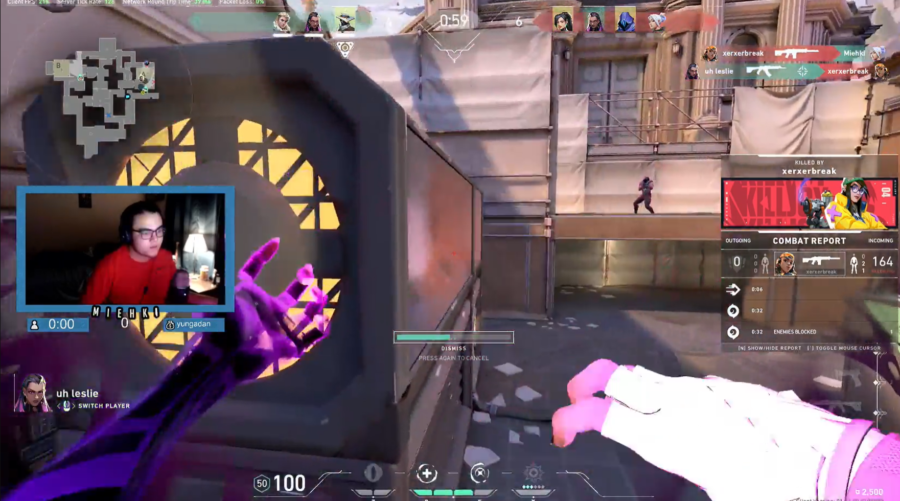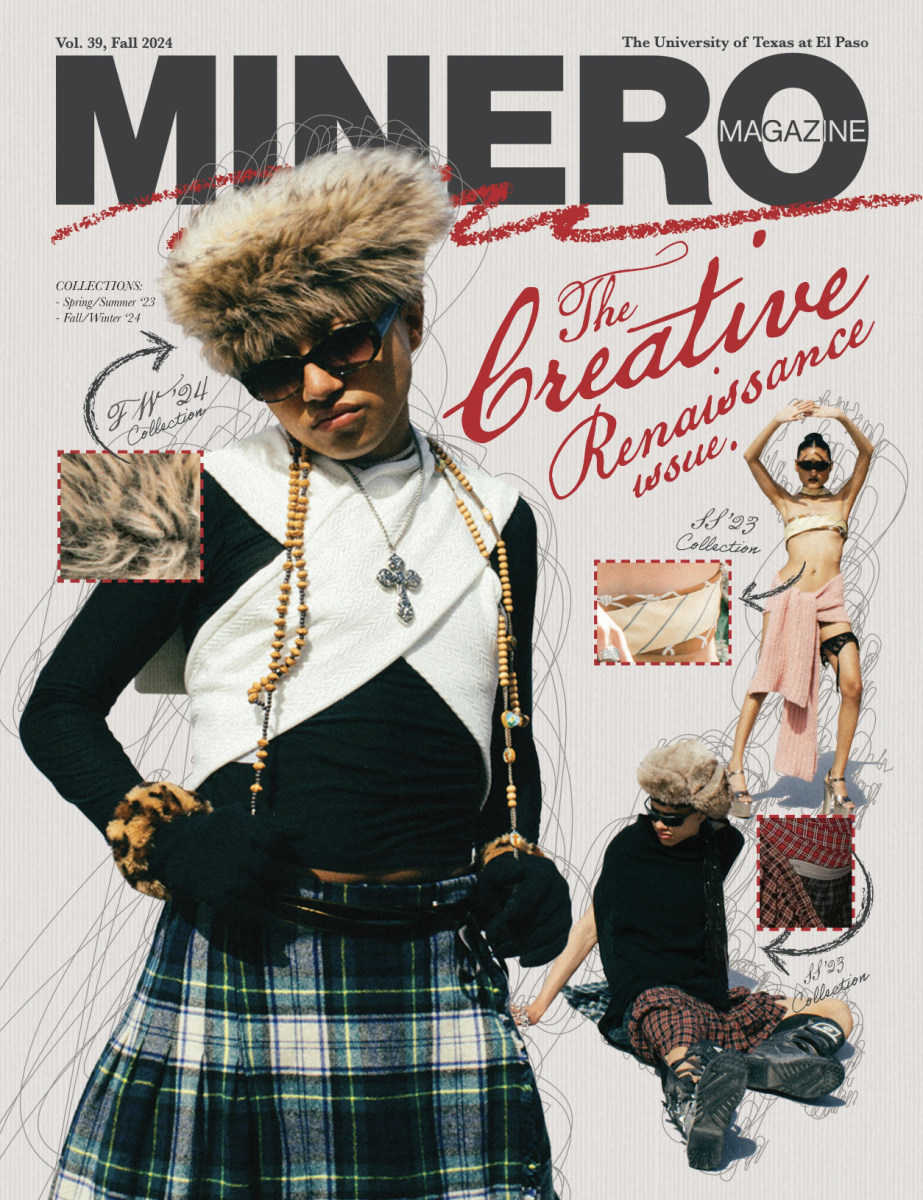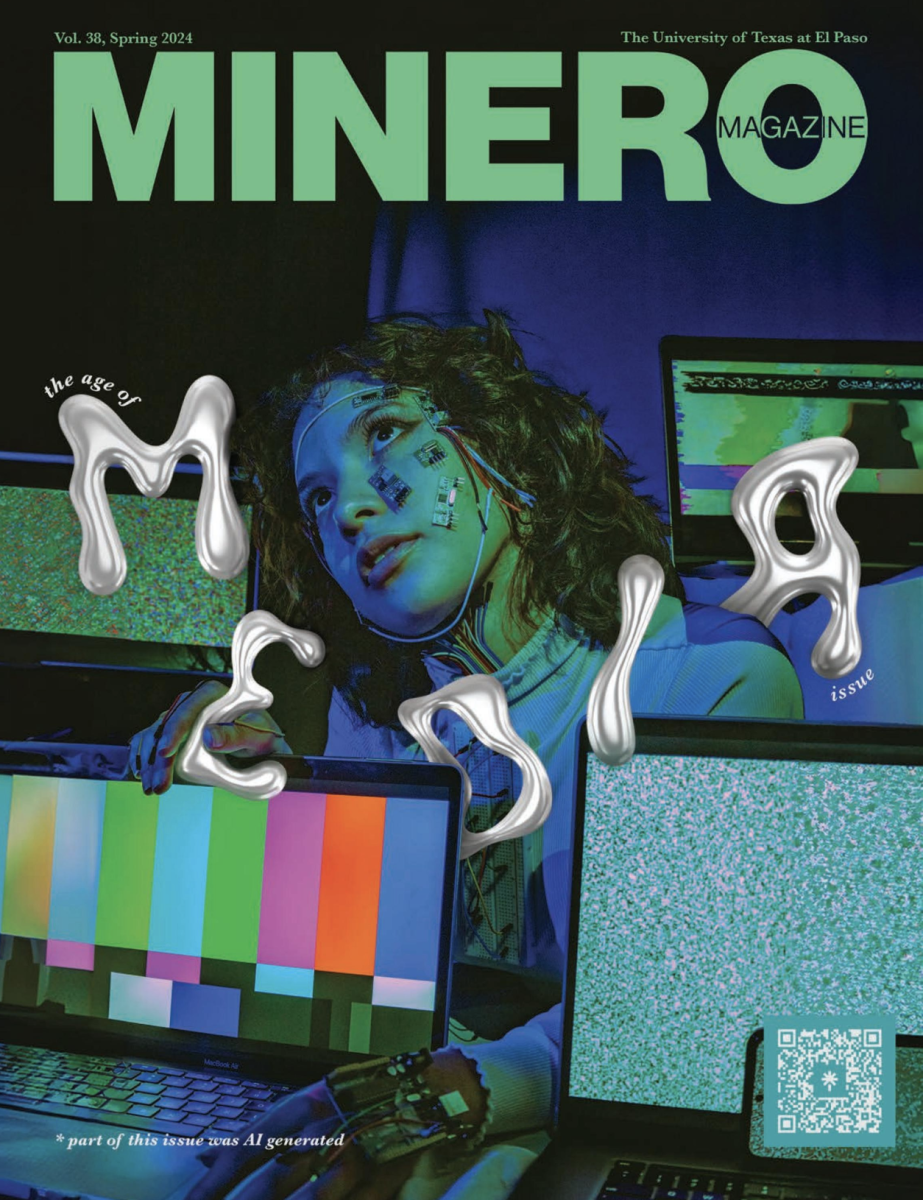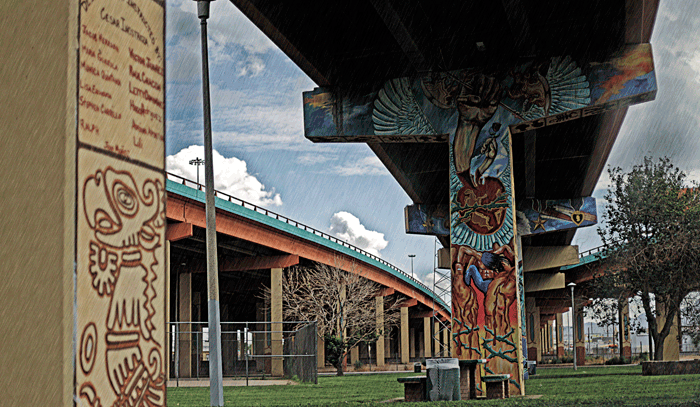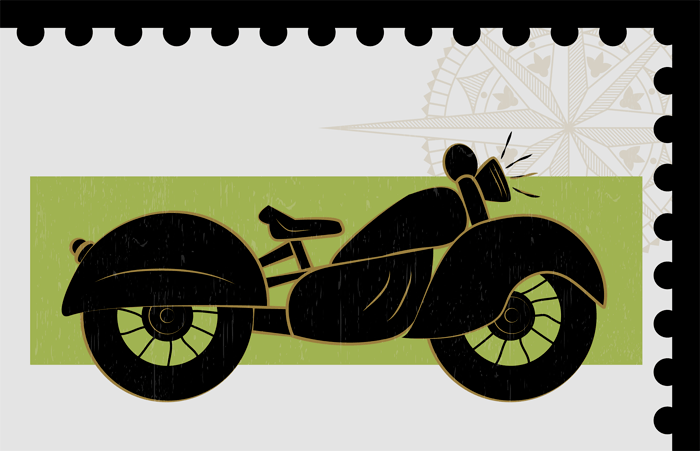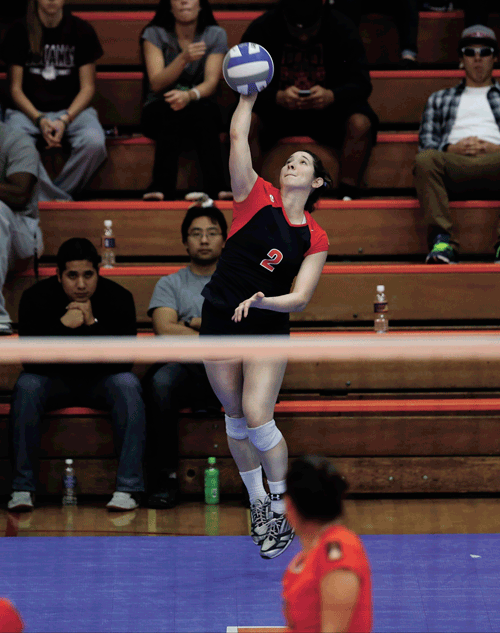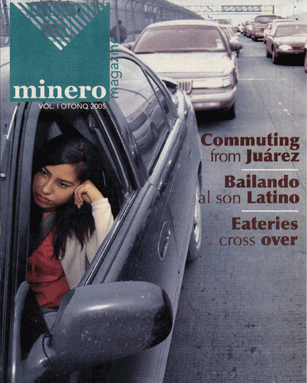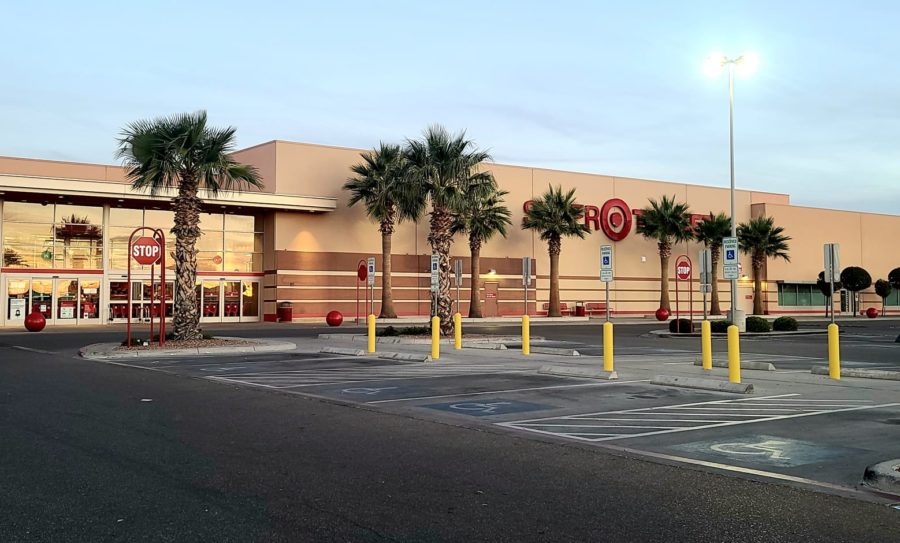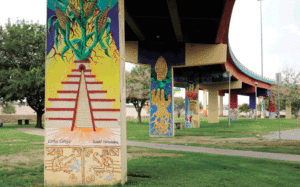
By: Aaron Montes
Since 2008, the murals that lie beneath the Spaghetti Bowl in South Central El Paso have been considered for removal due to the Texas Department of Transportation’s intent to build two new ramps between Interstate 10 and U. S. Highway 54 to alleviate traffic between the interstate and the Cesar Chavez Border Highway.
Muralists and the Lincoln Park Conservation Committee have battled with TxDOT to prevent the demolition of the Lincoln Center and the area around it.
On October 1, 2013, TxDOT, who owns the Lincoln Center and the right of way underneath the interstate, agreed with local preservation leaders that it would postpone the demolition for one year. The agency asked only that the preservation leaders find a government entity to own and manage the center.
On May 20, TxDOT hired contractors, who then setup a chain-link fence around the center, which spurred a dispute between the community and TxDOT. Since that incident, the city has stepped in and out of the disagreement, but has acknowledged its capacity to aid the conservation committee.
Miguel Juarez, a doctoral student in borderlands history who is on the Lincoln Park Conservation Committee, says members will continue to protect the center and all that is in the area. “It’s an entire community that wants this,” he says. “It’s a lot of people who are taking it upon themselves to do what they can with who they know to make this change.”
Local artist Lupe Casillas, who has painted murals for the Ysleta Independent School District, says that the area and the history of the center, which includes the murals, are a reflection of Mexican American history. “This was the first place Mexican-American artists could showcase their art,” she says. “If they tear this center and area down, it would be a tragedy for our history.” Casillas also says that such action would send a message that El Paso does not respect its history.
The earliest mural dates back to 1981, when Bobby Adauto, the director of the Lincoln Center at the time, asked an artist named Felipe Adame to paint a mural on what would be the first column under the freeway.
There are 42 murals located in the Lincoln Park area that were painted in the early and late ‘80s. More were added in the late ‘90s and early 2000s. There have also been some added recently between 2007-2011.
Most of the murals are aligned with a theme, says local artist Gabriel S. Gaytan, who has painted the four latest murals. He said that in the first columns, the theme is the Chicano and Civil Rights movements, and the other columns depict Mexican-American culture. Gaytan says the Lincoln Center, a 100-year-old building that has been around since the beginning of the 20th century, is the perfect place to have a Mexican-American cultural center. “It can become a cultural center as it was for the community,” Gaytan says. “It’s good because it’s central. People from the north, east, west and south can come and there’s plenty of parking.”
According to Gaytan, the murals are stories, ideas and carry many symbols that viewers need to consider to understand the work. “That’s what I try to teach people, see the whole picture, then make your own decision,” he says. One of his murals depicts a heart with its arteries extending all throughout the mural and below the heart it says: “Lincoln Park/El Corazon de El Paso/Chicano Park.” Gaytan says that the extended arteries represent the lanes on the freeway and highway and how they all lead to the center.
He also says that had TxDOT been able to demolish the area, it would have had a bad effect on the community. The threat of demolition is what brought people together to stand for the center. “It would have been devastating to the community around the park and a lot of groups around El Paso,” he says. “I think that had to happen for people to get off their couches and go out there to do something.”



